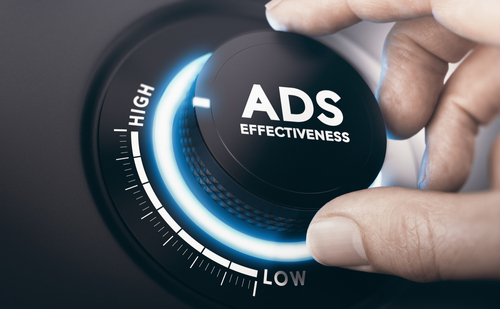 In the overall marketing mix, effective advertising is Holy Grail of all marketers. But what are the key ingredients of effectiveness in marketing communications? Colm O’Cleary of RED C offers some pointers.
In the overall marketing mix, effective advertising is Holy Grail of all marketers. But what are the key ingredients of effectiveness in marketing communications? Colm O’Cleary of RED C offers some pointers.
As marketers, we constantly strive to strengthen the bond between our brands and consumers, and our brand communications play a vital role in this process. Ensuring our advertising resonates strongly with consumers is a crucial component in driving brand growth, so it is important that our communications deliver on key elements that have been proven to drive a successful campaign.
RED C has years of experience in helping brands generate effective marketing communications using our RED C advertising testing tool and more recently, RED C Direct, our new online DIY ad evaluation product. So, what have we learned? Here are the Top 5 must haves for effective brand communications.
- Creativity
The likeability of your advertising is key; the more consumers enjoy watching a creative, the more likely they will be to want to see it again.
If your ad is received positively by your audience, this lowers the risk of ‘wear-out’ on repeat viewing, extending the lifespan of your campaign. The well-known advertising effectiveness guru Peter Field maintains that “creativity in advertising helps drive long-term business success, providing a powerful antidote to the short-term nature of so much activity today.”
Creative executions have the ability to resonate with consumers for a longer period of time, increasing the likelihood of your brand cutting through the noise and being present in consumers’ minds at moments of choice.
- Distinctiveness
As the founder and CEO of the Australian effectiveness consultancy, Amplified Intelligence, Karen Nelson-Field says: “We live in a constant state of ‘zombie’. So, attention to ads is not sustained and certainly not undivided. This means it’s vital your ad at the very least drives brand connections’.
A strongly branded creative will make it simple for consumers to link the advertisement to the brand. The use of Distinctive Brand Assets (DBAs) in your brand communications helps consumers make these mental connections, while continuous reinforcement of these DBAs ensures that your brand is quickly and easily identifiable in your advertising.
DBAs can come in all shapes and sizes, such as colours, logos, slogans, music/sounds, characters, celebrities, and any other asset that has the ability to get your brand noticed faster.
- Emotional Response
When choosing a brand, we rarely make careful and considered decisions; according to behavioural economist Gerd Gigerenzer, humans make “fast and frugal” decisions to arrive at “good enough” choices. Creating a strong emotional connection through your advertising helps to reassure consumers that your brand is a good choice at the point of purchase.
Advertisements that elicit a strong emotional response have a greater propensity to resonate with consumers, and, as a result, assist in long-term brand building. As advertisements are typically short in duration, it is important to generate an instant, system 1 emotional reaction; the stronger the reaction, the more effective it is in creating emotional connections to the brand.
- Fame
Advocacy or ‘fame’ in advertising refers to how well a creative delivers on social interactions for the brand. Are consumers talking about your ad with their friends and family? Is it being shared on social media? Are consumers actively seeking out your advertisement online?
The former adman turned effectiveness consultant, and author of Why Does the Pedlar Sing”, Paul Feldwick, has said: “Fame is the driver of successful advertising and a social construct. It emerges from the interactions between people, the media, and each other.”
So, creating shareable content with high talkability helps to generate buzz around your campaign, with your advertising gaining traction outside of the traditional distribution channels.
- Brand Impact
At its most basic level, your advertising should aim to have a positive effect on your brand in the mind of the consumer; this impact can be emotional, which aids in brand building, or rational, which acts as a sales activation tool.
When exposed to the ad, do consumers feel closer to the brand? Do they find the brand more appealing? Driving closeness and appeal are key as they have a long-term positive impact on your brand. But rational elements are important too; does the ad make consumers more likely to use your brand? Does it drive a perceived advantage for your brand over competitors? Does it make them feel that your brand offers something new or different?
While these more rational responses are less likely to have a long-term impact on your brand, they are crucial in driving short-term success. Pulling both emotional and rational levers in your advertising helps to balance short-term gains with long-term brand connections.
RED C Direct
RED C’s new self-service advertising evaluation tool, RED C Direct, focusses specifically on these five key elements, allowing you to run a full diagnostic on your advertisement quickly, easily, and cost-effectively. Upload stimulus, launch your own survey and receive results back in 24hours.
The platform utilises the award-winning RED Star effectiveness model and norm database and means you can test all different ad creatives in a cost and time effective manner. It also allows you to run tests for animatics and complete ads, while also giving you the option to measure the extent people have seen or heard the ad before the test, if the ad is already launched, to better understand how well it is cutting through. Tests can be conducted across all channels from TV/VOD/Online video ad tests, radio, press/outdoor/static image.
All scores are benchmarked against thousands of ads that have been tested over the past 10 years. You will receive a full evaluation of your creative, with results compared against our extensive norm database, and including diagnostic advice on how to improve your scores within 24 hours of launching your test.
Colm O’Cleary is an associate director of RED C





















